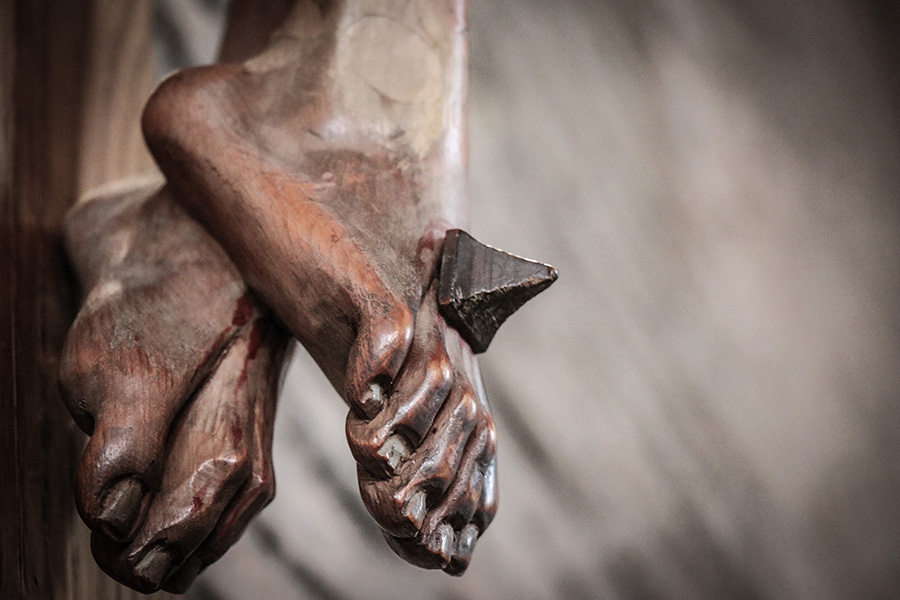 "The brotherhoods bring hope to thousands of people and lead them to faith."
"The brotherhoods bring hope to thousands of people and lead them to faith." Bishop Asenjo: "I will tell my successor to dedicate time to the Brotherhoods".
Bishop Asenjo: "I will tell my successor to dedicate time to the Brotherhoods".I would not know if the current society is the most convulsive in history, surely not, but it is the one we have to live and we have to try to improve and move forward. In this situation, in some circles people turn their attention to the brotherhoods and confraternities. Surely it is a good resource, but first we must objectify them, study their nature, aims and potential, beyond stereotypes, sentimentalism or prejudices.
Although many were born with a guild and mutualist character, in the Counter-Reformation the Council of Trent emphasized "the necessity and advantages derived from the worship of images, true effigies of Jesus and his Mother and thinks [the Council Fathers of Trent] that these images should go out into the street, so that those who by their will do not enter the churches, when they meet them in the streets, think of the moment of the Passion of Our Lord that this image represents" (T.C. Session XXV, 4-12-1516). This recommendation prompted the creation of brotherhoods with a more pastoral orientation, without abandoning the dimension of charity and mutual aid.
For this reason, although there is news of brotherhoods since the fourteenth century, the sixteenth century is that of the emergence of new brotherhoods, institutions that have been consolidated over the centuries, subject to the political ups and downs and currents of thought of each era.
It is surprising that in spite of their antiquity and relevance, they always had an imprecise fit in the canonical order, which led them to complicated relations with the hierarchical Church on some occasions and with the public authorities on others. Agreements and disagreements have been happening over the centuries. In the archives of the brotherhoods are kept documents that elaborate very precise chronicles of the lawsuits maintained between the brotherhoods and the Church, some bordering on the grotesque, also with the corregidores.
The 1917 Code of Canon Law, which for the first time constructs a complete legislative system proper to the Church, resolves the existence of the brotherhoods with a brief reference (c. 707) in which it defines them as "unions of the faithful", without specifying the scope of this definition.
The Second Vatican Council in proclaiming the "universal call to holiness, sanctifying the world from within" (LG) and the "explicit recognition of the faithful to associate" (AA), opens a new avenue that is reflected in the 1983 Code, which dedicates Title V of Book II, on the Associations of the Faithful to this subject, in addition to some references in other canons.
Curiously, this normative text does not mention brotherhoods or confraternities at any time, but it provides them with a perfect fit when referring to associations of the faithful. It distinguishes three types of associations: public, private and without legal personality.
Associations public shall be those whose purpose is to transmit Christian doctrine in the name of the Church, or to promote public worship, or to pursue other ends reserved by their very nature to ecclesiastical authority. By reason of their purposes, it is exclusively for the competent ecclesiastical authority to establish these associations of the faithful.
They are Private those whose purposes are not reserved to ecclesiastical authority, although they must be compatible with Christian doctrine. They may acquire juridical personality if their statutes are known and approved by the hierarchy.

The following are considered partnerships without legal personalityThe members of a congregation, any group of the faithful united for a pious purpose. They must be known by the Hierarchy, to avoid dispersion and to guarantee their suitability.
In this panorama, where do the brotherhoods fit in? Since their purpose is to transmit Christian doctrine in the name of the Church, to promote public worship, the promotion of charity and the formation of the brethren, purposes reserved by their very nature to ecclesiastical authority, it must be concluded that the brotherhoods are public associations of the faithful of the Catholic Church, established by ecclesiastical authority, with their own juridical personality, which receive from the Church the mission to work for the ends they propose to achieve in its name.
They do not act in their own name, but on behalf of the Church, which reserves to itself functions of orientation and supervision. It is the Hierarchy that has to confirm the elected officers of the brotherhood; appoint the Spiritual Director; supervise its plan of action; examine and approve, if appropriate, its Rules; has sanctioning capacity; verifies the economic administration, since the goods of the brotherhoods are "ecclesiastical goods", and some other functions aimed at the better fulfillment of its purposes.
Brotherhoods are therefore more than relics of anthropological or ethnographic interest. They represent a decisive contribution to the task of "sanctifying the world from within", which requires a delicate harmony between the heart and the head, popular religiosity and doctrine, in order to develop their full potential. It is worthwhile to deepen our knowledge of them.
D. in Business Administration. Director of the Instituto de Investigación Aplicada a la Pyme. Eldest Brother (2017-2020) of the Brotherhood of the Soledad de San Lorenzo, in Seville. He has published several books, monographs and articles on brotherhoods.










